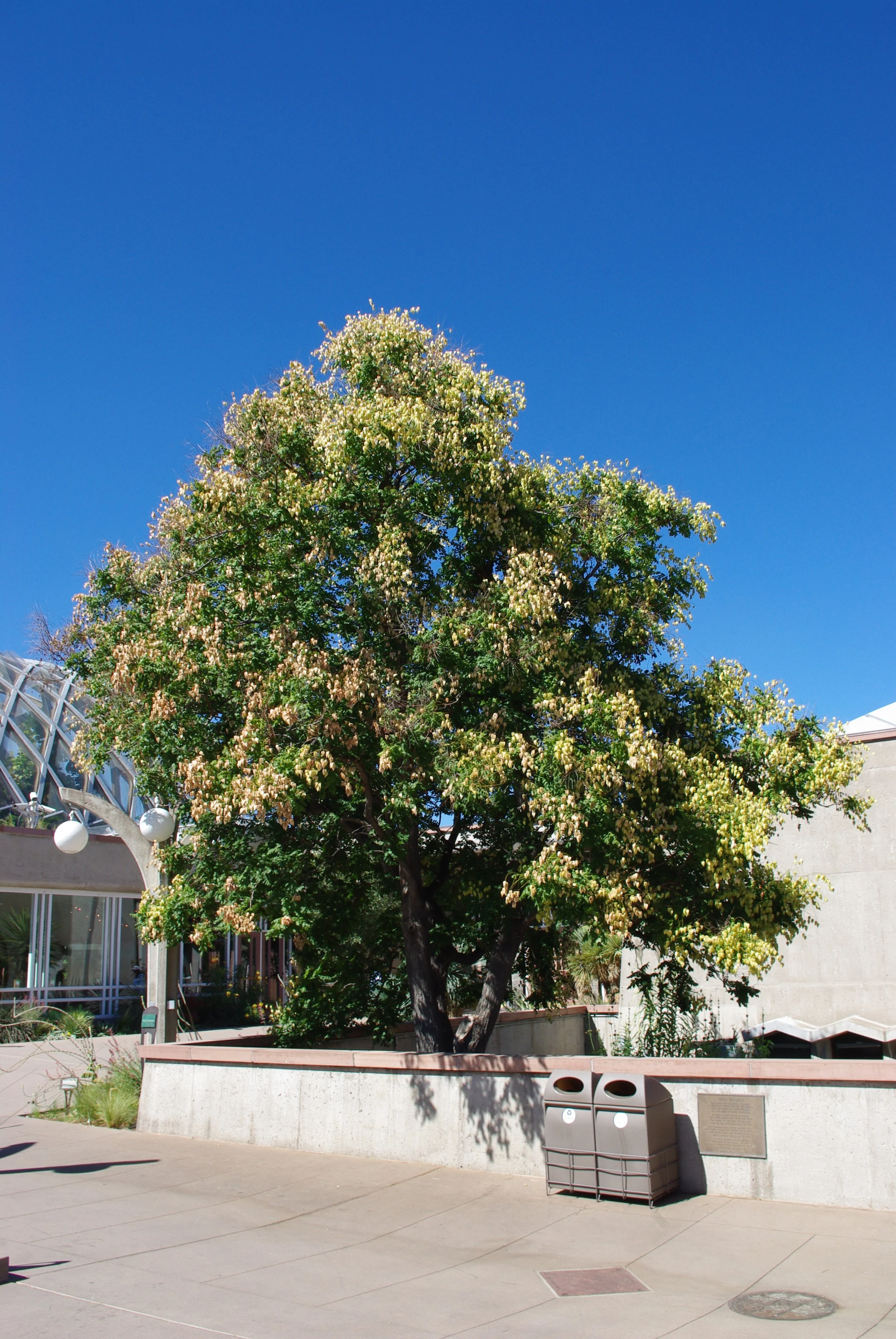golden raintree (Koelreuteria paniculata)
Golden raintree at Denver Botanic Gardens at York Street.
Species info:
Leaves: Alternate, pinnate or bipinnately compound, 6–18 inches long with 7–15 leaflets. Each leaflet 1–4 inches long, coarsely serrated along the margins. Bright green in summer.
Leaflets: 7–15 per leaf; irregularly serrate and sometimes lobed.
Leaf Surface: Smooth, bright green, slightly glossy.
Bark: Light gray-brown; develops ridges and shallow furrows with age.
Flowers: Very showy, bright yellow, and fragrant; appear in large, loose clusters in late June to early July.
Fruit: Papery, lantern-like 3-valved capsules, 1½–2 inches long. Start light green and mature to tan-brown by late summer; contain three small, dark, round seeds.
Botanical: Koelreuteria paniculata
Family: Sapindaceae
Mature Height: 30 feet
Canopy Spread: 25 feet
Foliage Type: Deciduous
Tree Shape: Rounded to spreading; nearly as wide as tall
Growth Rate: Medium (approx. 12–18 inches per year)
Flowers: Mildly showy.
Fruit: Lanterns persist into winter.
Fall Color: Yellow, not notable.
Water Use: Low to moderate; drought-tolerant once established
Hardiness: USDA Zones 4–8
Soil Preference: Prefers well-drained soils; tolerant of drought, heat, and poor soil conditions
Wildlife Value: Attracts pollinators with fragrant flowers; seeds occasionally eaten by birds
Pests/Pathogens: No significant pests or diseases observed; generally low-maintenance
Planting Recommendations: Recommended for most sites along the Front Range and the Western Slope; exhibits exceptional resilience during drought conditions. Weak wood makes it vulnerable to snow-loading.
Information Sources:
Front Range Tree Recommendation List
Michael Dirr, Manual of Woody Landscape Plants (University of Georgia, 1990)
Michael Kuhns, Trees of Utah and the Intermountain West (Utah State University Press, 1998)


